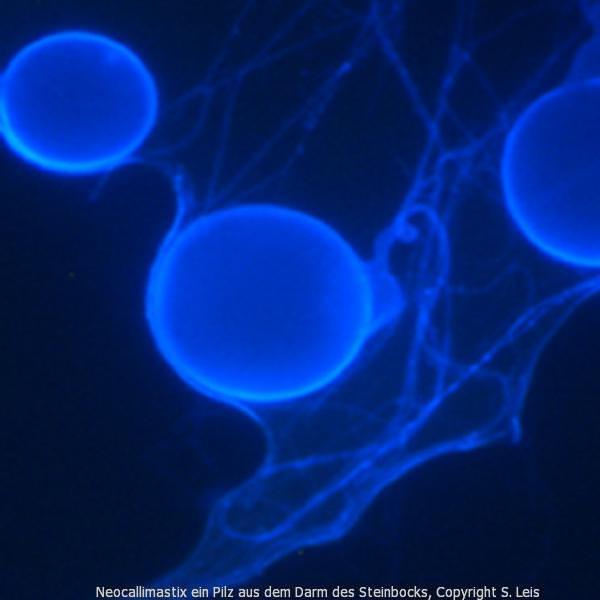Some Alpine animals eat grass with many fibers (cellulose) and cannot digest it. Cellulose-degrading microorganisms, which live in their intestines, help them and so they can survive and don’t starve, such as the chamois (ruminants), the ibex or the ptarmigan (with its extra-long caecum).
Fungus in the gut of chamois attaches to grass.
Symbiosis partners
of alpine animals
Some alpine animals eat lignocellulose– (fiber-) rich materials and harbor specific cellulose-decomposing microorganisms, such as anaerobic fungi (Neocallimastigomycota). This symbiosis is common in alpine ruminants like ibex and chamois, and in the ptarmigan with its extra-long intestines.
Idea/Organization
Institute of Microbiology (Insam), School of Education (Kapellari), Alpenzoo (Böhm)


